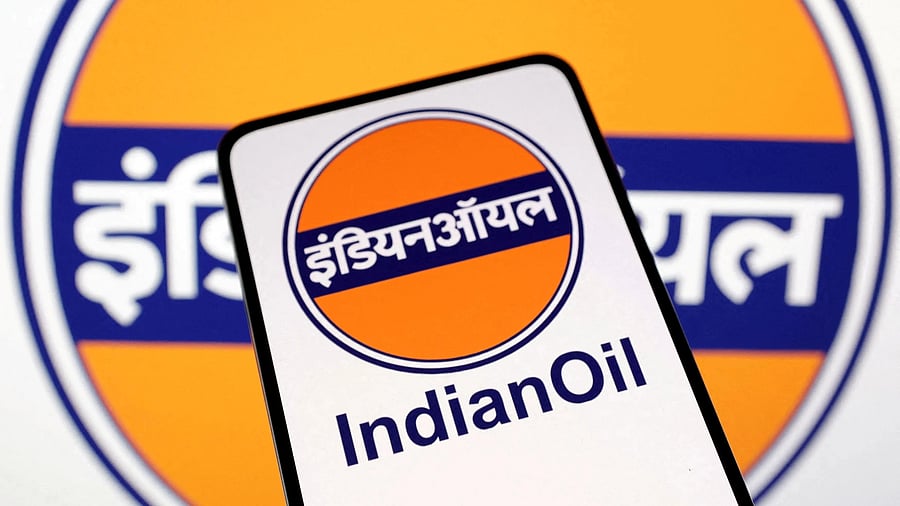
FILE PHOTO: Indian Oil Corp Ltd logo .
Credit: Reuters photo
New Delhi: Cooking oil is often discarded after being used for frying at home or in restaurants. However, a refinery of IndianOil has now won a certification to use the same oil to produce sustainable aviation fuel (SAF), the company chairman Arvinder Singh Sahney said.
SAF is an alternative fuel made from non-petroleum feedstocks that reduces emissions from air transportation. It can be blended up to 50 per cent in conventional aviation turbine fuel (ATF or jet fuel), depending on availability. India has mandated 1 per cent SAF blending in jet fuel sold to international airlines from 2027.
IndianOil's Panipat refinery in Haryana has won the International Civil Aviation Organization's (ICAO) ISCC CORSIA certification (International Sustainability and Carbon Certification - ISCC - developed under the Carbon Offsetting and Reduction Scheme for International Aviation (CORSIA) to produce SAF from used cooking oil, he said.
"We are the only company in the country to get this certification," he said.
"The refinery will start producing some 35,000 tonnes per annum of SAF from the end of the calendar year." The production will be enough to meet the mandated 1 per cent blending requirement for the country in 2027, he added.
Explaining the process, agencies will collect used cooking oil from large users, such as hotel chains, restaurants, and snacks and sweets producing companies like Haldiram, and supply it to Panipat refinery.
Panipat refinery will use this oil to produce SAF, he said.
Large hotels and restaurant chains normally discard cooking oil after one use. At present, this used cooking oil is collected by agencies and exported.
"There is a large amount of such oil available in the country. The only challenge is collection. While it is easy to collect from large hotel chains, a solution needs to be found for collection from small users, including households," he said.
Parallely, the company has also set up a Rs 5,000 crore plant at its Koyali refinery in Gujarat to produce Butyl Acrylate (BA), which is used in making paints.
The 1,50,000 tonnes per annum Butyl Acrylate plant, only second in India after BPCL's unit at Kochi refinery, will help end 3,20,000 tonnes of annual paint feedstock that the country currently imports, Sahney noted.
State-owned Indian Oil Corporation (IOC) has been at the forefront of innovations, particularly in the areas of green energy, sustainable solutions, and technological advancements. The firm is working on renewable energy sources, like 2G ethanol, fuel cells, bio-diesel, and energy storage devices.
"The paint industry is growing at a CAGR of 13-14 per cent, and the bulk of the raw material they use is imported. In July, we commissioned the BA unit at Koyali refinery, which will eliminate the need to import, saving foreign exchange for the country," he said.
Together with the Kochi plant, the new unit can substitute as much as 80-90 per cent of imports, he said.
On green hydrogen, Sahney said the company awarded a tender for the country's largest green hydrogen plant to L&T.
"The 10,000 tonnes a year green hydrogen unit at the Panipat refinery will be ready in 27 months," he said.
Green hydrogen, produced from splitting water using renewable energy, is a clean energy source that only emits water vapour and leaves no residue in the air, unlike coal and oil. It can be used in industries and automobiles as fuel, but the prohibitive production cost has been a stumbling block.
India has relatively cheaper renewable energy (electricity produced from sunlight and wind), which has helped keep green hydrogen production cost at less than USD 4 per kg, the chairman said, adding that IndianOil will use the fuel in its Panipat refinery.
Refineries, currently, use grey hydrogen - hydrogen produced from fossil fuels - in hydrocracking units to produce fuels like petrol and jet fuels.
"IndianOil remains agile and nimble in product innovation and meeting fast-changing energy dynamics," Sahney said. "A lot of other innovations are in the works, which will be unveiled when they mature." Explaining the SAF certification process, he said, "SAF produced at IOC's Panipat refinery has undergone rigorous assessment for lifecycle carbon emissions and traceability, creating a clear pathway for Indian airlines to integrate certified SAF into their operations".
Certifications like ISCC CORSIA ensure the fuel meets environmental and social standards.
The certification also sets a benchmark for other domestic refiners and industry players to scale up SAF production, in line with the government's vision of achieving net-zero emissions by 2070.
With this recognition, IOC has once again reaffirmed its role as a trailblazer in India's energy transition, bringing India closer to a greener and cleaner aviation future.
India plans to mandate blending of SAF with conventional ATF in a staged manner. One per cent SAF blending in ATF sold to all international flights is to start from 2017 and increase to 2 per cent in the following year.
SpiceJet had flown a test flight, using a blend of 75 per cent regular ATF and 25 per cent biofuel in August 2018. Subsequently, IndiGo did a demonstration flight using a 10 per cent SAF blend on an international flight in February 2022.
While CORSIA is a key part of the International Civil Aviation Organization's (ICAO) strategy to achieve carbon-neutral growth for international flights going ahead, Cotecna is a leading provider of testing, inspection and certification services.